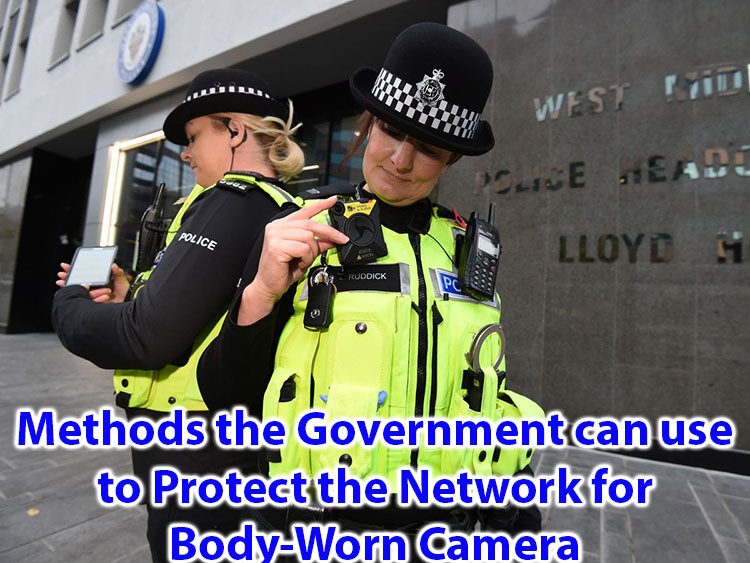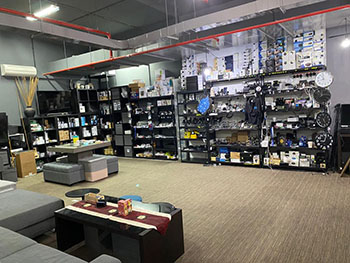Methods the Government can use to Protect the Network for Body-Worn Camera
The single greatest nontechnical issue commanding any exchange about the utilization of body-worn cameras (BWCS) is protection. Choosing when to record a communication stays a questionable subject. A few promoters of BWCs state all connections among police and the open ought to be recorded, while others might want to see officials use circumspection in choosing when to record. In the interim, in 12 states there are laws that require all gatherings to assent before any account can happen.
The policy considerations on this issue are protracted and definite. However, it raises a basic IT thought: security. The exact opposite thing any chosen neighborhood authority needs to see is features in the nearby paper about an information rupture uncovering hundreds or thousands of video documents. Hence alone, CIOs should rehearse due to industriousness in arranging how the security of the video documents will be dealt with.
With regards to an on-premises arrangement, CIOs should gauge such inquiries as “how much” and “how great” alongside access. For law implementation offices that are thinking about a regional storage arrangement, choices should consider the security ramifications of such a framework. Distributed storage arrangements can give some law authorization organizations, particularly little ones, with a level of security they will be unable to create without anyone else.
Yet, as the Police Executive Research Forum brings up, a cloud arrangement requires CIOs and law implementation organizations to play out their due tirelessness in guaranteeing that chain of custody for the video is appropriately settled. Other security focuses to think about when assessing an outsider distributed storage arrangement include:
- Work with a trustworthy merchant.
- Go into a legitimate agreement that administers the seller relationship and ensures the office’s information.
- Utilize a framework that has a worked in review trail to anticipate information altering and unapproved access.
- Utilize a framework that has a solid strategy for programmed reinforcement of information.
- Counsel with prosecutors and legal advisers before settling on any official conclusion.
Body Worn Cameras And Securing The Government Network:
On the off chance that the point of a camera enhanced to the uniform of a cop is to give target setting of their experiences with the general population, at that point, legitimately, the recording made must stay secure and immaculate. This is in light of a legitimate concern for both law implementation, which could utilize the recording as proof for both indictment endeavors and to absolve officials who might be unjustly blamed for unfortunate behavior, and the general population, who might get no an incentive from video film that an official blamed for bad behavior had the option to get to or adjust sometime later.
Steve Ward, a previous cop and the CEO of Vievu, a supplier of body-worn camera gadgets and programming, says he saw far-reaching wariness until around a half year prior, when the organization cooperated with Microsoft to give distributed storage utilizing the Azure Government cloud, which meets the FBI’s Criminal Justice Information Systems (CJIS) guidelines.
“Private industry in America, they don’t have a similar investigation as government organizations,” Ward says. “We’ve had cloud-based administrations, there are twelve of them out there that any private business can proceed to store information in, however government is an alternate creature. Thus as of recently back, a cloud arrangement that fulfills FBI guidelines didn’t exist. That was a ton of the incredulity. Law implementation simply didn’t confide in it, it didn’t fulfill the guidelines that they needed to meet, thus they simply didn’t move that way.” Truth be told, the FBI reported in 2012 that any cloud administration offered to law authorization offices must agree to the CJIS security necessities.
Obviously, security isn’t the main concern when considering putting away video film. While each organization actualizes its own systems for shooting officials’ connections in the field, the American Civil Liberties Union has asked police divisions to execute “an office-wide arrangement that orders that police turn on account during each collaboration with general society.” PERF recognized that a few offices may grasp that approach, yet called attention to that a few experiences with the open require protection, especially discourses with unfortunate casualties or witnesses who might be less disposed to coordinate if their announcements are recorded. The “more typical methodology” is for officials to just enact their cameras “during law requirement related experiences and exercises, for example, traffic stops, captures, searches, cross-examinations, and interests,” the PERF report peruses. Furthermore, by and large, “approach, for the most part, show that if all else fails, officials should record,” as indicated by the report.
Despite the approach, organizations that utilization body-worn cameras will produce a great deal of film. The obsolete procedures of sponsorship up film on circles put away at a police officer not just disintegrates the open’s trust in such a program – as it enables access to the recording – it’s likewise a channel on HR and spending plans.
“Preceding that, a police officer needed to contract staff, needed to purchase an extra room, needed to pay someone to really go in and physically oversee and back up recordings routinely, and I figure you can envision exactly how costly and tedious that is,” Ward says.
Room For Innovation:
While the cloud has made ready for the information serious procedure of dealing with these cameras, the innovation still has the opportunity to get better. Programmed matching up of video film from the camera to the cloud sounds perfect, yet it’s basically not down to earth yet. With Vievu, for instance, officials need to take their cameras back to their specialty central command, physically associate them to a PC, and burden the recording to the distributed storage framework all alone.
In spite of the fact that the product is intended to keep officials from messing with the recording before putting away it in the cloud, the procedure still leaves space for blunder. Strategies may command that officials transfer the majority of their recording, yet that probably won’t stop an official with something to escape obliterating the gadget before deifying any implicating film. What’s more, the way that worries over capacity costs imply that numerous officials get the chance to choose when to record what associations could make an open door for a contention.
In the event that ongoing improvements in law authorization have made body-worn cameras an absolute necessity have, the innovation has advanced to make them sufficiently valuable for far-reaching appropriation. The U.S. Equity Department as of late reported a $20 million test case program through which it will subsidize the usage for many law authorization offices, recommending this is ending up to a greater extent a reality than a pattern in law implementation. Also, through Vievu’s eyes, all they required was a protected spot to store all the video.
“The greatest pattern in my industry is the CJIS-confirmed Microsoft Azure cloud that we’re working with,” Ward says. “It’s a distinct advantage, and it’s what’s going to make everything change in the administration division.”
Normally, distributed storage is a decent answer for the issue, especially as it confines the officials’ entrance to the records. Be that as it may, for a considerable length of time, asking law requirement offices to depend on such delicate information to the cloud was no simple errand. A report (PDF) on body-worn cameras for law implementation discharged in September 2014 by the Police Executive Research Forum (PERF) cautioned organizations to “consider outsider merchants cautiously,” and said that many police administrators met for the report focused on the significance of going into a lawful agreement with the distributed storage seller.
Conclusion:
The support for CCTV is alluring, however, the proof isn’t persuading. They are gathered over too short a period, in questionable conditions, and without respect for measurable shows. Various classes of wrongdoing are aimlessly consolidated, disguising potential increments in a few and diminishes in others. Ditton’s temporary discoveries are that CCTV lessens wrongdoing under the focal point by around 20% – still a noteworthy figure, however one which may be bettered by progressively traditional ways to deal with law authorization.
An ongoing Home Office report (CCTV nearby focuses – report 68 in the wrongdoing recognition and avoidance arrangement) uncovers genuine deficiencies in the guarantees of CCTV frameworks. The report presents proof that the method is less compelling than was previously envisioned, and that the effect on wrongdoing is inconsistent. In Newcastle, for instance, wrongdoing levels dropped altogether in zones not under CCTV observation (robbery dropped by 57% in surveilled zones of the downtown area) yet it likewise dropped 39% in non-surveilled territories. A few violations declined all the more significant in the non-surveilled region (general robbery dropped by 11% under the focal point, and by 18% somewhere else).
The wrongdoing insights once in a while, if at any time, mirror the theory that CCTV only dislodges crime to territories outside the scope of the cameras. One of the highlights of current observation practice is that the cameras are regularly introduced in high-lease business zones. Wrongdoing might be simply pushed from high worth business zones into low lease local locations. Committees frequently find that it is difficult to oppose requests for such frameworks.









